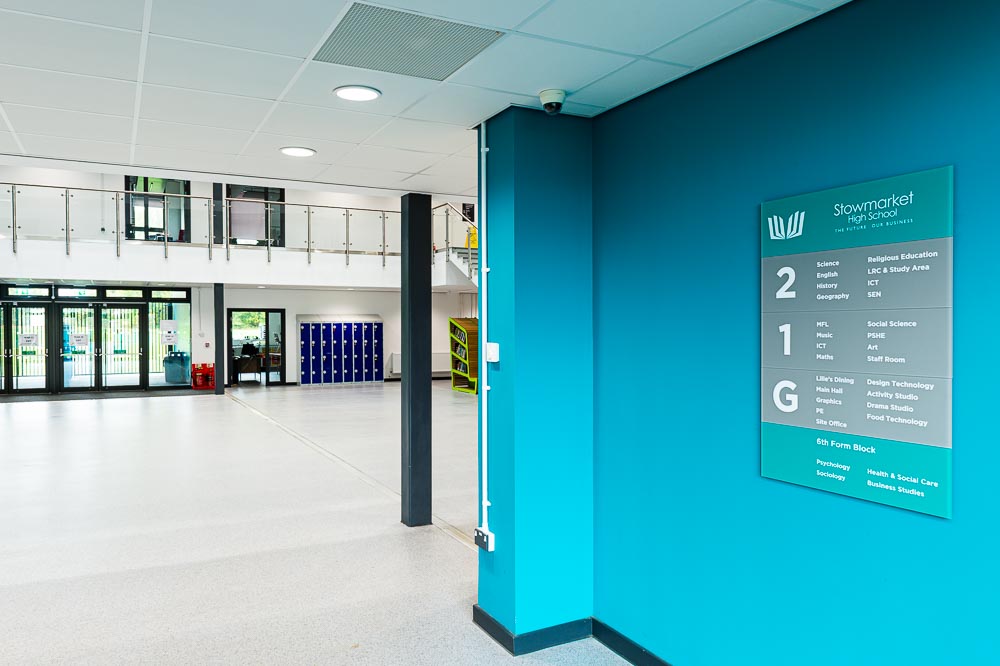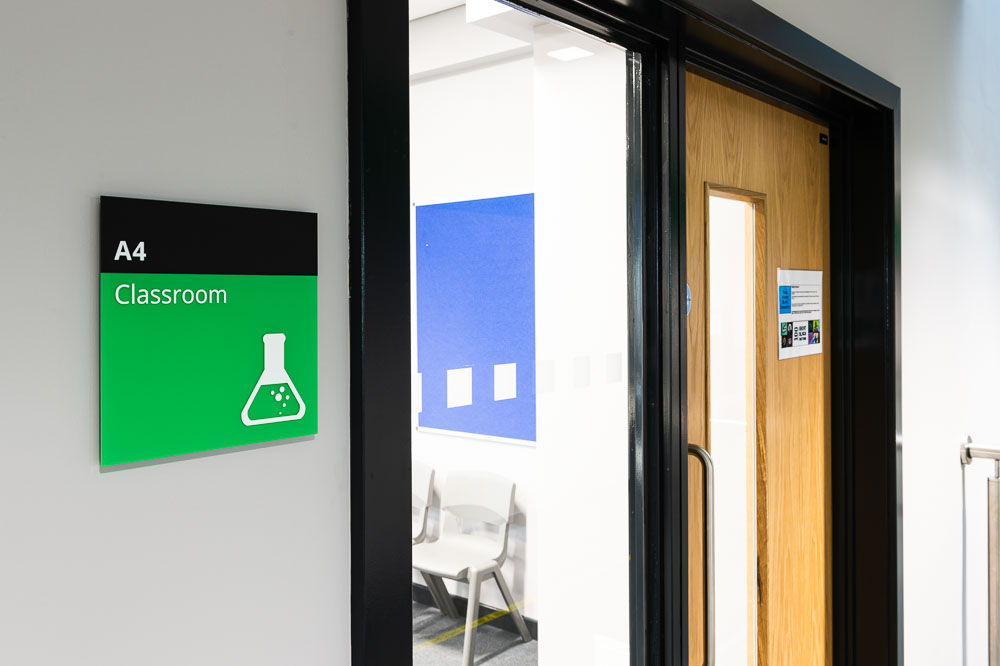What is the purpose of school signage?
The purposes of signage in schools are mainly for wayfinding, information, and education. These different messages all need to be communicated to audiences of different ages but primarily need to be understood by children aged 4 to 11. In education terms, these age groups usually have vastly different levels of comprehension, so a key part of primary school signage strategy, is communicating messages to the right people in the most appropriate format.
What are the different kinds of signage primary schools need?
Wayfinding signage shows pupils, staff, guardians, and visitors where to go within the school. Because adults usually have a higher understanding of directions and natural wayfinding than children; primary school signs are more effective if they are targeted to the youngest audience. Wayfinding signs tell everyone where places are and what places are called. For example, which way the toilets are, and that behind this door is the Year 2 Tiger Classroom.
Information signs can range from highlighting the school’s identity, values, and ethos, to letting guardians know where they can park safely. Information signage can be used to convey messages to the public such as updates on school shows and how to get in touch. Inside the school they can be used for the display of health and safety rules or where to queue for the canteen.
Educational signs in a primary school are often in the form of reminders around the school that help keep children engaged when they are going from class to class or waiting for something. Examples can be times-tables stair graphics, words on the floor to read aloud or images of animals and their names along a corridor.


What are the different audiences for primary school signage?
The pupils at the school are the primary audience for school signage. Teachers and other school staff who spend a significant amount of time at the premises are likely to learn their way around and remember information easily but will still rely on good signage. Guardians, inspectors, and visitors, however, will use the signage for wayfinding and information purposes. There are some signs that will not need adjusting for the different audiences, such as the school entrance or exterior wall signs. Visitors will need wayfinding signs to reception and reminders of no smoking though. It is important to think about the journeys of visitors, staff and pupils around the premises when planning a new signage strategy, so you do not miss anyone out.
Where should you put signage in a primary school?
The different purposes of signage will require different placements around the school. Educational signs can be added on stairs, playgrounds, walls and even ceilings. In the playground, it can be popular to put signage over fences, not only to keep the spaces private for the children, but to give them a more engaging visual than the locale.
Why is good school signage important in a primary school?
Good and effective signage is important because it communicates a message. Without messages people get lost, misunderstand information, and are not engaged. Bad signage can have information on it but if it is faded, out-of-date or has mistakes on then the message that the information is trying to communicate is lost. In primary schools, it is important to plan a signage strategy that communicates messages effectively to young children. This involves using bright colours, images and simple texts or icons.


Why should you update your primary school signage?
As we have mentioned already, it is important to make sure your signage is clear and effective in its message. Depending on what state your current signage is in, will determine whether you need to update some or all the signs in the school. One way to find out is to invite someone who does not already know the school, for a walk around the premises. Ask them to feedback on how good the signage is in the categories of wayfinding, information, and education. Do this with more than one person who fits into your normal audiences and include people with additional accessibility needs too.
Take into account if any of the pupils have accessibility requirements, such as visual impairments. Does your current signage include talking signs or Braille? These are worth considering, not only for current students, but also for prospective students and guardians looking at the inclusivity of potential schools.
Another element to look at is whether there is new information that needs to be communicated. Any changes that happen within the school, such as new teachers or a new building, changes to room functions or updated health and safety measures, should be added to signage.
Lastly, check what state your current signage is in and if it is faded or damaged then it should be replaced. Not only is it less effective but it can also pose a health and safety risk if left to get worse.
Primary schools are bright and pleasant places for children to learn fundamental skills. Signage plays an important part of the primary school experience and should be kept in good condition, be accessible for all and be effective in communicating messages. Talk to us about your current signage or learn more about our other work in primary schools here.


